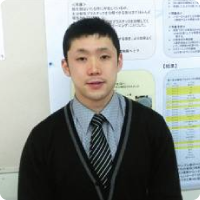- Notice
Team works on microbial screening and aims for world's first
2013.11.05
Keiai Gakuen High School
Dr. Suzuki teaches biology at Keiai Gakuen High School and also serves as an advisor for the science club. The club has been selected for the JST (Japan Science and Technology Agency) SPP (Science Partnership Project) and club activity support program, and is promoting ongoing research activities. We spoke with them mainly about these activities.
 Roots are research activities based on trial and error
Roots are research activities based on trial and error
Dr. Suzuki, who had aspired to become a biology teacher since his school days, decided that if he was going to become a middle and high school teacher, he should acquire some specialized knowledge and research skills, so he went on to a master's degree program. The research theme he chose there was to elucidate the ecology of "Taphrina," a pathogenic fungus that causes cherry psittacosis. Since the infection route and life cycle of Taphrina on cherry trees were not known, and no experimental system had been established, I constructed the experimental system from scratch by myself through trial and error. He used genetic diagnosis to find out where Taphrina was present in cherry trees infected with epiphytic disease, and conducted inoculation experiments to find out how Taphrina was transmitted to other cherry trees. After completing graduate school, he spent two years as a JOCV (Japan Overseas Cooperation Volunteers) and also worked as a biology teacher in Tanzania. After returning to Japan, he spent six months teaching in Aomori prefecture before being assigned to his current school. The skills and knowledge he gained during these experiences have become the foundation of his current activities.
Focus on the story of the research
Immediately after his appointment, he started a science club. I wanted to make the most of my field of expertise in extracurricular activities. The first thing he did was to determine a research theme. After gathering information from other schools' case studies, articles, websites, and workshops, we decided to conduct "screening of biodegradable plastic-degrading bacteria" as a result. The reasons were that it would contribute to society, that it would tell a story and would easily motivate the students, and that a teaching material kit already existed and could be utilized. After deciding on the theme, we distributed flyers to gather students who would be interested in doing research together. At first, I was not sure if I would be able to gather enough students, but as a result, I was able to gather six students. They are still conducting experiments and research every day.
What the teacher pays attention to in her research activities with students is the story of the research. For example, in soil sampling, he does not just have the students dig, but he reminds them of the story behind the work and tries to keep them motivated by showing them the purpose beyond the work, saying, "There may be buried gold.
Pride in the students we study with
Through research activities, the teacher hopes to give students a taste of real "learning," similar to what they will experience at university, by engaging in experiments whose results are unknown. He also believes that the ability to summarize research content and results in the form of a paper and the presentation skills necessary for academic conferences and research presentations*2 are skills that will surely be useful for students after they enter society.
The teacher is proud of his six students. He believes that even six high school students can make world-first discoveries and work as well as or better than a single college student if they work as a team. With this faith and trust in his students, the results of their research will naturally follow.
Presented at Science Castle 2012.
Article in the March 2013 issue of Kyoiku Ouen, a science education information magazine
Affiliations are current at the time of publication in Education Support.
